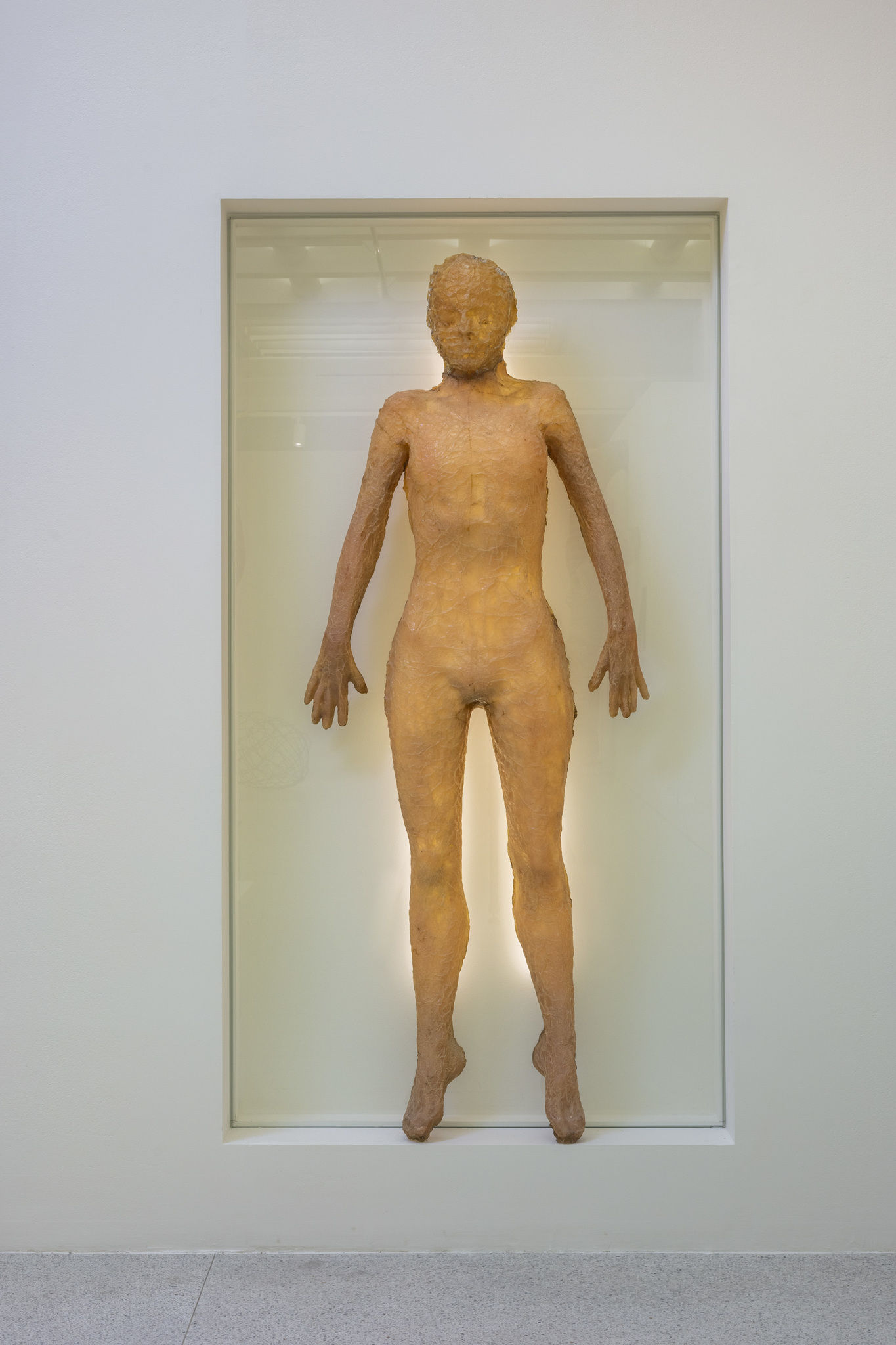Nervní figura
The Nervous Figure
1981
laminát
laminate
176 × 70 × 30 cm
670 300 CZK
DPH je účtováno podle zvláštního režimu dle § 90 zákona o DPH.
Zaujalo vás toto dílo? Obraťte se na nás: hi@trafogallery.cz, +420 739 517 758

Nervní figura
The Nervous Figure
1981
laminát
laminate
176 × 70 × 30 cm
670 300 CZK
DPH je účtováno podle zvláštního režimu dle § 90 zákona o DPH.
Zaujalo vás toto dílo? Obraťte se na nás: hi@trafogallery.cz, +420 739 517 758
Kurt Gebauer
1941
Kurt Gebauer během svého pestrého uměleckého života využil celou škálu tradičních i netradičních materiálů, mnohdy dotvářejících sochařův smysl pro vyjádření absurdity, a figura je jeho celoživotním tématem. Překvapující a nezvyklé bylo na přelomu šedesátých a sedmdesátých let minulého století záměrné využití pomíjivých materiálů, například pytloviny vycpané slámou. Měkkostí takového materiálu zdůrazňoval umělec ve figurách proměnlivost v čase a narušoval dogma sochařství jako symbolu světské věčnosti. Zároveň odkazoval na přirozený růst a bobtnání lidského těla zevnitř. Modely pro svou tvorbu vidí všude kolem sebe, pozoruje každodenní život a zachycuje tak pohyb ve velmi prchavém a nahodilém okamžiku. Gebauerovy postavy obecně působí svou jednoduchostí, lehkostí, jsou radostnou oslavou života, ale zároveň jistou satirickou výpovědí o společnosti a poselstvím své doby. Realismus Gebauer nechápe jako slepé kopírování, ale jako určitou abstrakci a sochařskou geometrii. Také proto v jeho postavách dochází často k výrazné deformaci či zjednodušení tvarů. Nedlouho po měkkých materiálech začal pracovat s umělými hmotami, především s laminátem. V té době ho silně ovlivnil sochařský hyperrealismus, jenž sochaře přivedl k tvorbě přímých odlitků lidského těla do laminátu. Tak vznikly Figury v oknech i Nervní figura, jejíž povrch může připomínat zvrásněnou krajinu i zmuchlanou látku. Jsou to nervy, které vystoupily z vnitřku člověka na povrch a které pohlcují i jeho tvář, jeho vlastní identitu. Toto působivé vrásnění těla bylo způsobené alobalem, do něhož byla žena při odlévání zabalena.
The figure is a lifelong theme for Kurt Gebauer, who has drawn on a wide range of traditional and non-traditional materials in his varied artistic life, often adding a sculpture’s sense for expressions of the absurd. Surprising and unusual at the turn of the 1960s and 1970s was the use of deliberately ephemeral materials such as burlap stuffed with straw. Through the softness of such materials, Gebauer emphasised the mutability in time in figures and disrupted the dogma of sculpture as a symbol of secular eternity. At the same time, he referred to the natural growth and swelling of the human body from within. He saw models for his work all around him, observing everyday life and thus capturing movement in very fleeting and random moments. Gebauer’s figures generally strike one with their simplicity and lightness. They are a joyful celebration of life, but also a satirical statement on society and a message of their time. Gebauer understands realism not as blind copying, but as a kind of abstraction and sculptural geometry. This is also why there is often a significant deformation or simplification of shape in his figures. Not long after soft materials he began to work with plastics, above all laminate. At that time he was highly influenced by sculptural hyperrealism, which led him to create direct casts of the human body in laminate. This was at the genesis of Figures in Windows and Nervous Figure, the surface of which can resemble a wrinkled landscape as much as a crumpled fabric. These are the nerves that have moved from the interior of a person to the exterior, and which absorb their face, their own identity. This impressive wrinkling of the body was caused by the foil in which the woman was wrapped during casting.